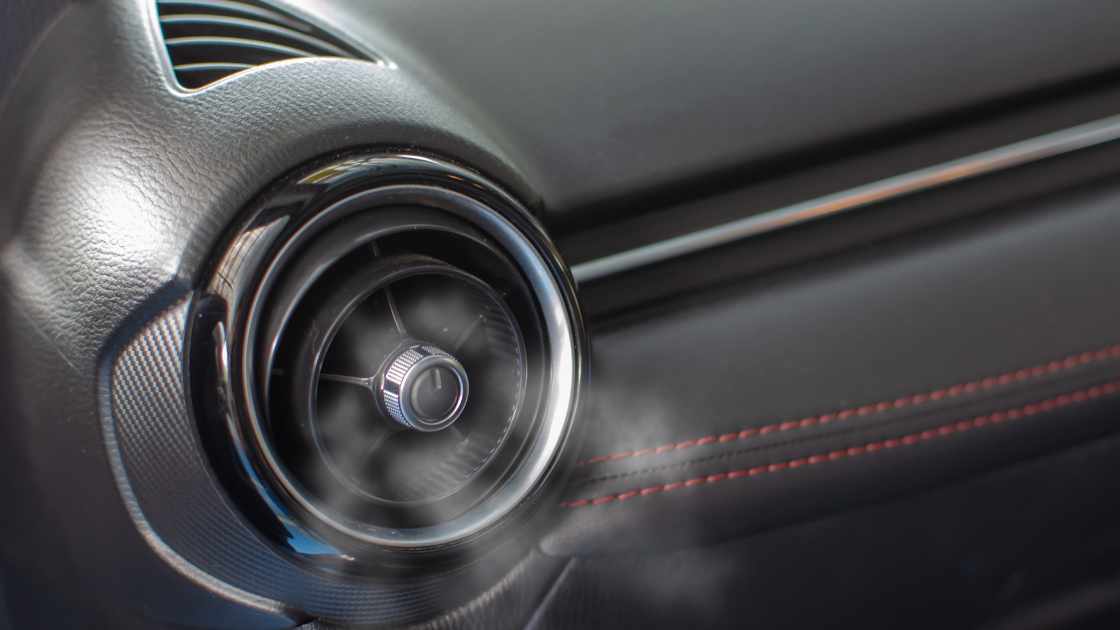Few things are more frustrating on a hot summer day than turning on your car’s air conditioning and being greeted with warm air instead of the refreshing cool breeze you were expecting. If your car AC is not blowing cold air, there could be several reasons behind the issue. This troubleshooting guide will help you identify and address common problems, potentially saving you a trip to the mechanic.
Troubleshooting Guide: How to Fix a Car AC Not Blowing Cold Air
Check Refrigerant Levels
Insufficient refrigerant is a common culprit for warm air blowing from car vents. Low refrigerant levels can occur due to leaks or natural depletion over time. To check, locate the low-pressure port on the AC system, usually identifiable by a blue or black cap with an “L” on it. Use a gauge to measure the refrigerant levels; if low, you may need to recharge the system.
Inspect for Leaks
Leaks in the AC system can lead to a loss of refrigerant, resulting in decreased cooling efficiency. Inspect the AC components, such as hoses, connections, and the condenser, for visible signs of leaks, including oil stains or refrigerant residue. If you find any, consult a professional mechanic to fix the leaks and replenish the refrigerant.
Check the Compressor
The compressor is a vital component of the AC system responsible for pressurizing and circulating the refrigerant. A malfunctioning compressor can lead to warm air issues. Check if the compressor clutch engages when the AC is turned on. If not, it may indicate a faulty compressor clutch or a more serious compressor issue that requires professional attention.
Inspect the Condenser
The condenser is located in front of the radiator and helps dissipate heat from the refrigerant. If it’s clogged with debris or damaged, it can hinder the cooling process. Clean the condenser fins carefully using a soft brush or compressed air. If damaged, consider replacing the condenser to restore proper cooling function.
Evaluate the Blower Motor
The blower motor is responsible for pushing air through the AC system and into the cabin. If it fails, you may experience weak airflow or no cold air at all. Test the blower motor by setting the AC to maximum and listening for its operation. If it’s malfunctioning, replace the blower motor to restore proper air circulation.
Examine the Thermostat
A malfunctioning thermostat can prevent the AC system from regulating temperature effectively. Check if the thermostat is working correctly and, if necessary, replace it. A faulty thermostat may cause the AC to blow only warm air or fail to maintain a consistent temperature.
FAQs
Why is my car AC not blowing cold air?
The most common reason for a car AC not blowing cold air is low refrigerant levels. Over time, refrigerant can deplete or leak, affecting the cooling efficiency. Check the refrigerant levels using a gauge and, if low, recharge the system. If the issue persists, inspect for leaks and consult a mechanic for further diagnosis.
What should I do if the AC compressor is not engaging?
If the AC compressor isn’t engaging when you turn on the AC, it may indicate a problem with the compressor clutch or a more significant issue with the compressor itself. Check the compressor clutch for proper engagement. If it’s not functioning, seek professional assistance to diagnose and repair the compressor or clutch issues.
How can I improve the airflow if the AC is blowing weakly or not at all?
Weak or no airflow from the AC vents may be attributed to a faulty blower motor. Test the blower motor by setting the AC to maximum and listening for its operation. If it’s not functioning correctly, replace the blower motor to restore proper air circulation and address the issue of the AC not blowing cold air.
Final Thought
While fixing a car AC not blowing cold air can sometimes be a DIY endeavor, certain issues may require professional assistance. If you’re unable to identify or resolve the problem after performing these checks, it’s advisable to consult a qualified mechanic. Regular maintenance, including checking refrigerant levels and keeping components clean, can prevent AC issues and ensure a comfortable driving experience.

Jeff Gordon is an accomplished writer with expertise in the basics of car accessories. With a keen eye for detail, Jeff has established himself as an authority on the subject, with a passion for all things automotive. Based in Jasper, Jeff is dedicated to providing readers with the information they need to make informed decisions when it comes to their car accessories.





